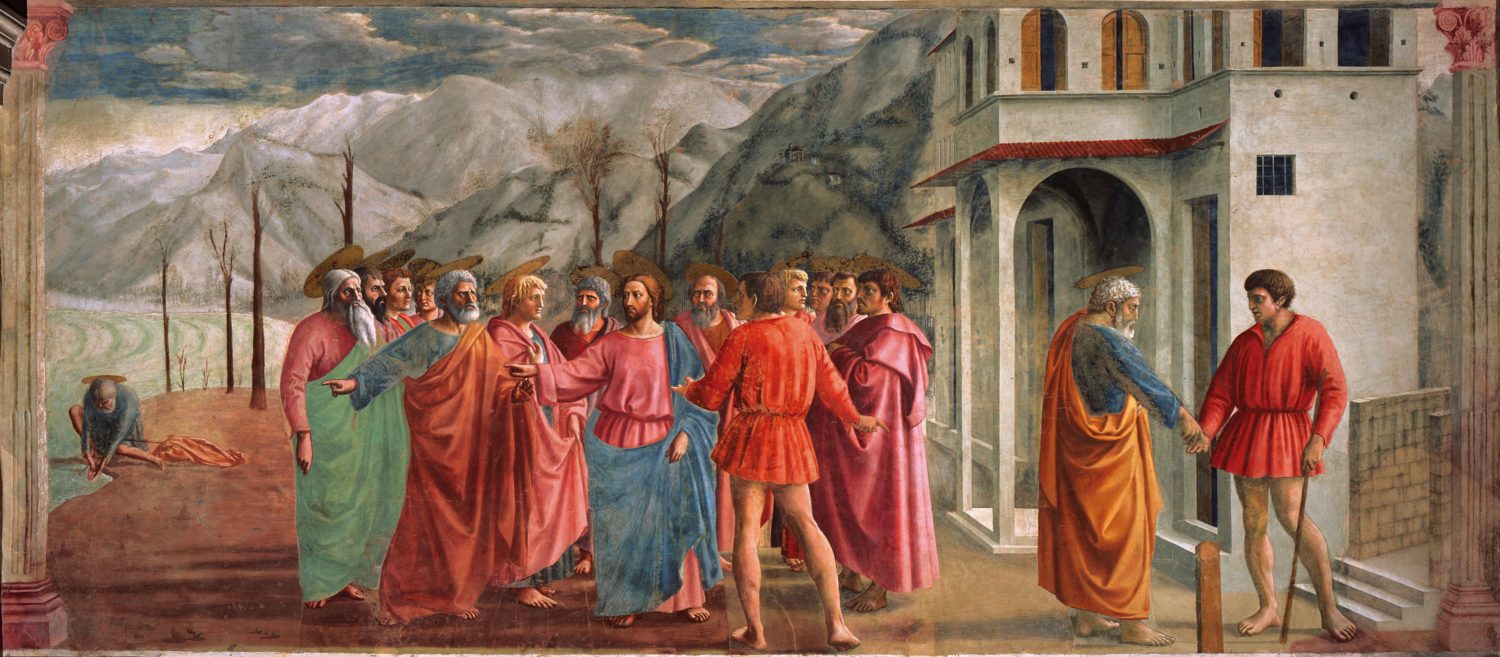
Lord Clark of Civilisation said: “The grandest of all testimonies to the dignity of man is by Masaccio, in the series of frescoes he painted in the Church of the Carmine”.
The Brancacci Chapel in the Church of Santa Maria del Carmine in Florence was constructed around 1387 by Antonio Brancacci then in 1423 a descendant, Felice Brancacci, flush with money from the booming silk trade, commissioned Masolino and Masaccio to create a fresco cycle based on the life of St Peter. They were both established artists and had worked together previously on the Virgin and Child with St Anne for the Sant’Ambrogio church in Florence.
Masolino was about 40 years old and Masaccio about 22, what is interesting is that Felice Brancacci must have known that they had completely different styles which would be reflected in the finished work. Masolino was largely International Gothic in style, Masaccio was one of the great Renaissance painters who revived the style of Giotto and developed it. He added chiaroscuro, directional light and both linear and atmospheric perspective. The realism this created resulted in paintings that are believable spaces occupied by believable objects and people. This was a major step in the development of the Renaissance and of subsequent European art. Generations of artists have gone to see the Brancacci frescoes, to copy them and to learn. Michelangelo, who had trained by copying Masaccio’s frescoes, got into a fight in the Brancacci Chapel with a fellow artist Pietro Torrigiano, presumably when they were both studying there, which is how he got his distinctive broken nose.

Masolino left to go to Hungary in 1425 and then Masaccio to Rome in 1428 (where he died aged just 26) before the job was finished and then a further disaster struck. In 1431 Felice Brancacci married Lena Strozzi, whose family were great enemies of the Medici, so when the Medicis returned to Florence from exile they exiled him in 1435, declaring him a rebel in 1458. The Carmelite Friars then totally destroyed Masaccio’s Crucifixion of St Peter and vandalised his Raising of the Son of Theophilus by scrubbing out the images of the Brancacci family that were in it. They also moved a picture of the virgin in and rededicated the chapel “La Madonna del Popolo”. The Brancacci patronage was expunged.
About 45 years later the Brancaccis were allowed back and Filippino Lippi (son of Fra’ Filippo Lippi) then finished the work. Interestingly Lippi had been apprenticed to and worked with Botticelli, yet for his work in the Brancacci Chapel he put aside his normal painting style and instead imitated that of Masaccio. During 1481-5 he repaired and finished Raising of the son of Theophilus as well as painting new frescoes. The final tally of pictures is Masaccio 6, Masolino 3, Lippi 3.
So Felice Brancacci’s patronage had immense importance in the history of art, the paintings he commissioned stand alongside the Arena Chapel and Sistine Chapel in their power and influence.

